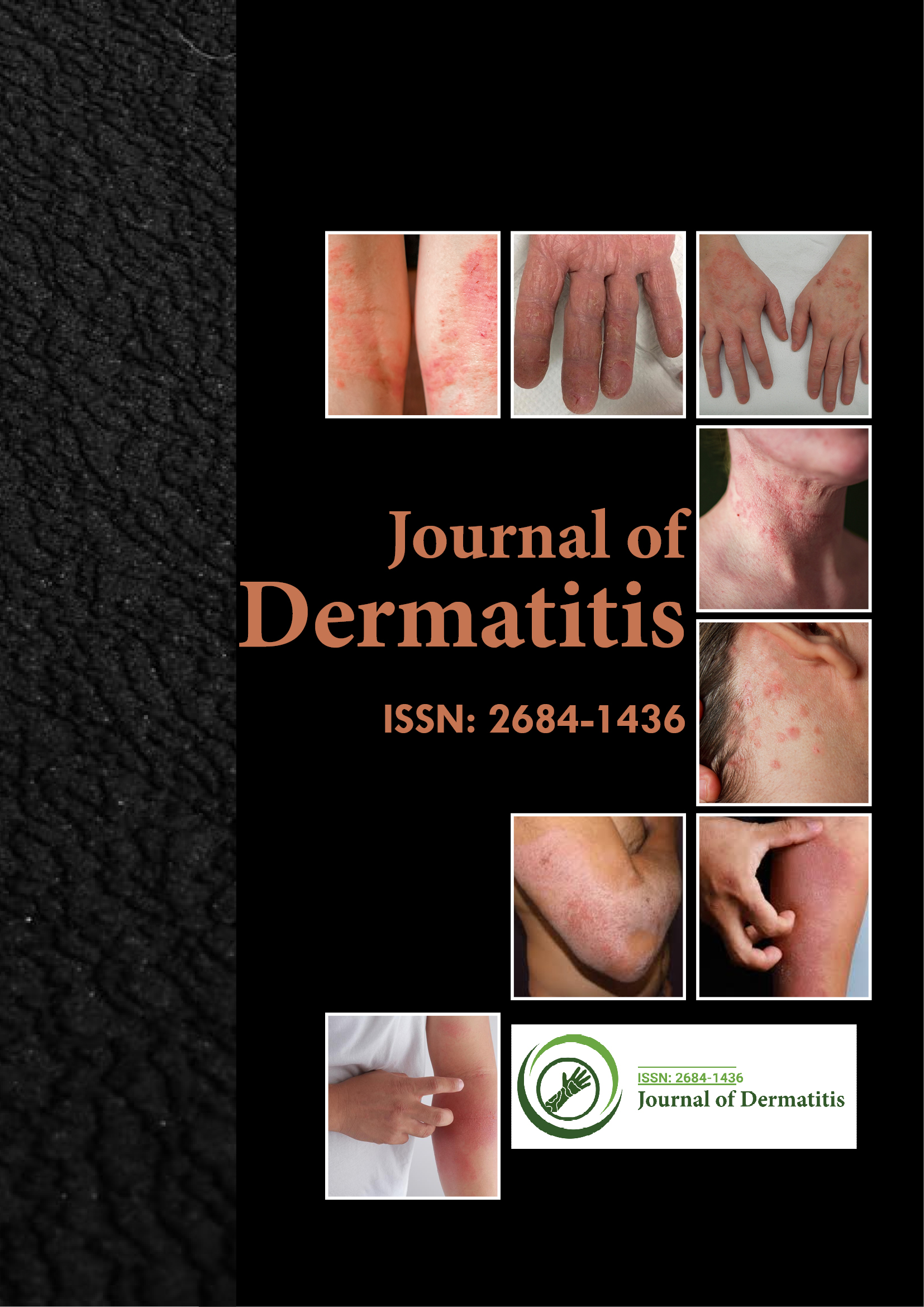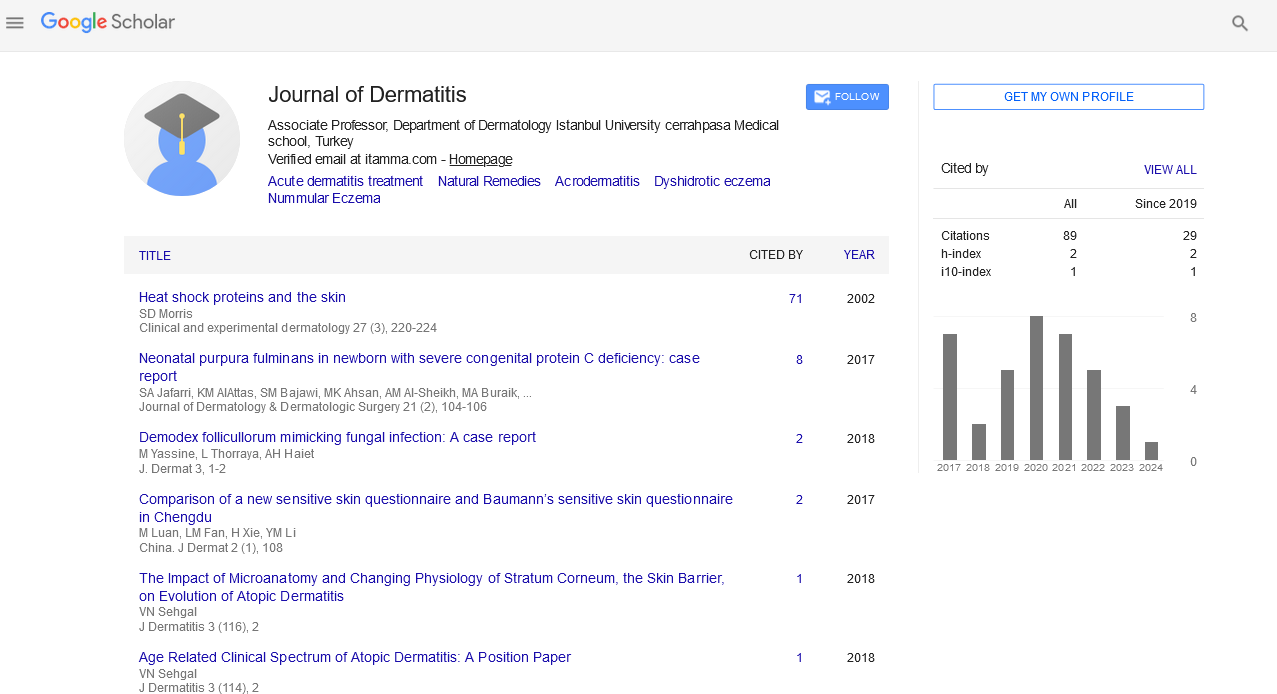Indexed In
- RefSeek
- Hamdard University
- EBSCO A-Z
- Euro Pub
- Google Scholar
Useful Links
Share This Page
Journal Flyer

Open Access Journals
- Agri and Aquaculture
- Biochemistry
- Bioinformatics & Systems Biology
- Business & Management
- Chemistry
- Clinical Sciences
- Engineering
- Food & Nutrition
- General Science
- Genetics & Molecular Biology
- Immunology & Microbiology
- Medical Sciences
- Neuroscience & Psychology
- Nursing & Health Care
- Pharmaceutical Sciences
Opinion Article - (2022) Volume 7, Issue 6
Cutaneous Effects of Graft Versus Host Disease
Lorry Millikan*Received: 01-Nov-2022, Manuscript No. JOD-22-19070; Editor assigned: 04-Nov-2022, Pre QC No. JOD-22-19070 (PQ); Reviewed: 18-Nov-2022, QC No. JOD-22-19070; Revised: 25-Nov-2022, Manuscript No. JOD-22-19070 (R); Published: 02-Dec-2022, DOI: 10.35248/2684-1436.22.7.169
Description
Graft Versus Host Disease (GVHD) has significant dermatological manifestations. Dermatologists are essential members of the patient's care team because the skin is frequently the first organ to be affected by GVHD.
When donor immune cells identify and assault host antigens, GVHD results. GVHD is the term used to describe the host related immunologic insult. Hematopoietic Stem Cell Transplantation (HSCT), which is more frequently allogeneic than autologous, is the main cause of GVHD. Donor T cells in allogeneic HSCT target populations of malignant hematopoietic cells to produce a graft-versus-tumor response. However, GVHD happens if the recipient's non-hematopoietic tissues are targeted. The balance between a graft-versus-tumor effect and GVHD is influenced by a variety of variables, including genetic compatibility between the donor and the host and the strength of the T-cell response.
When patients receive HSCT, GVHD can occur in as many as 40%-60% of cases. GVHD has also been linked to solid organ transplants, blood transfusions, and maternal fetal transfusions. Before transplantation, a variety of sorting techniques remove potential GVHD effector cells from donor marrow, but these methods do not significantly lower GVHD rates. GVHD continues to be the main contributor to morbidity and mortality after HSCT, despite efforts to manipulate the immune response prior to, during, and after transplantation.
Acute Graft Versus Host Disease (GVHD) used to manifest during the first 100 days after transplantation, but chronic GVHD appeared after that point. More subsequently, instead of utilizing the 100 day limit to distinguish between the two entities, the aforementioned National Institutes of Health Working Group produced consensus criteria using clinical results. Hepatitis, enteritis, and dermatitis are the three classic symptoms of acute GVHD, but an autoimmune syndrome affecting numerous organs characterizes chronic GVHD.
Acute GVHD often begins as a scattering of erythematous macules and papules that, as GVHD severity grows, cover a larger percentage of the total body surface area. The most severe form of acute GVHD might lead to erythroderma and bullae. Patients' prognosis in acute GVHD is influenced by the extent of liver and gastrointestinal system involvement. It is uncommon to see GVHD evidence in the liver or gastrointestinal system without skin involvement.
A late stage of acute GVHD may develop into chronic GVHD, or it may exist independently. Chronic GVHD mostly affects the skin, and it can cause scleroderma or eruptions resembling lichen planus. Sclerodermatous GVHD has a wide range of clinical manifestations and poses treatment difficulties.
Until marrow engrafting is established and blood counts are within the reference range, patients who have bone marrow transplants typically stay in the hospital. Inpatient care is used to treat acute GVHD, which manifests during the transplantation recovery period.
Patients with chronic GVHD may occasionally require hospitalization for pulse steroid therapy, but they are generally treated as outpatients.
Conclusion
Acute Graft Versus Host Disease (GVHD) is thought to occur in three stages. First, during the conditioning process, chemotherapy and radiotherapy cause tissue damage that stimulates the host antigen-presenting cells. After engaging with these activated antigen-presenting cells, donor T cells begin to multiply. Finally, a variety of variables, including T-cytotoxic cells, start killing the target tissue, which includes the skin, liver, and gastrointestinal system.
Citation: Millikan L (2022) Cutaneous Effects of Graft Versus Host Disease. J Dermatitis. 7:169.
Copyright: © 2022 Millikan L. This is an open-access article distributed under the terms of the creative commons attribution license which permits unrestricted use, distribution and reproduction in any medium, provided the original author and source are credited.

